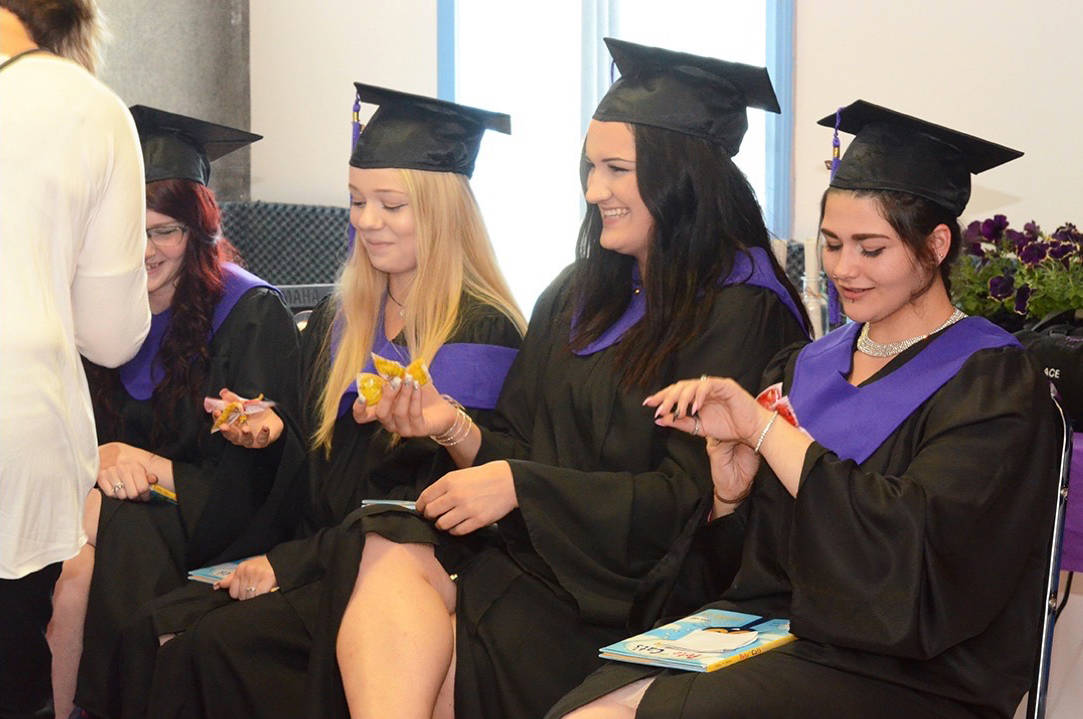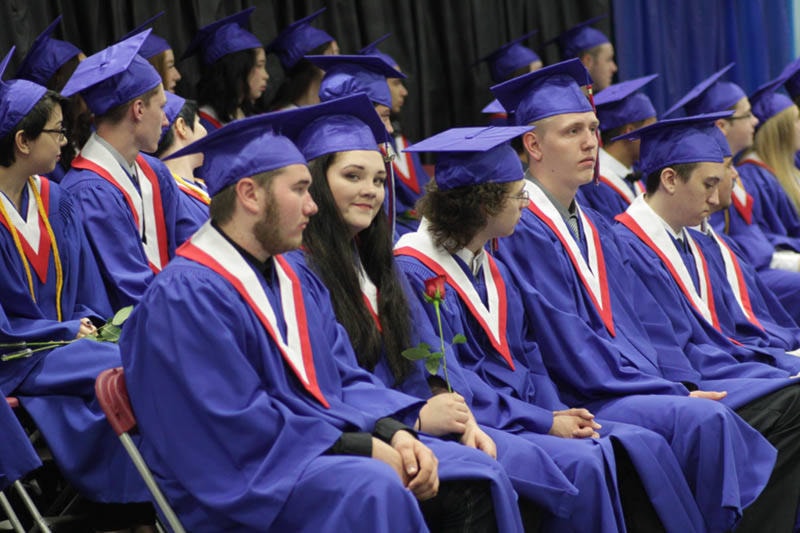The number of students graduating high school within six years has steadily declined over the past five years, but members of the school board say these numbers are misleading.
Superintendent Karen Nelson told the school board at a Feb. 6 board meeting six-year graduation rates have declined significantly over the past five years. From the 2015-16 school year to last year the graduation rate declined from 75.5 per cent to 63.7 per cent.
The group hit the most by this decline are male students, who saw their graduation numbers drop from 73 per cent to 58 per cent. For aboriginal students, there was an increase this past year after two low years for graduation. In 2015-16 only 41 per cent of Aboriginal students graduated, this number increased to 57 per cent in 2016-17.
Trustee John Hendrickson called the six-year completion rate a “false number” as it does not take into account those who do graduate but do so in longer time periods or move away from the district. He added the low number of students in the district also skews the statistics.
“I agree with trustee Hendrickson, some of the students take time and therefore aren’t included in that six-year graduation rate and seen as an X when actually there’s a check mark when they do graduate. Which makes B.C. the highest in Canada at 90 per cent,” trustee John Koopman said. “Numbers can be misleading.”
Board chair Linda Kerr said the province should take into account those who take longer to graduate, if they are as committed as they say to personalized learning.
In alternate programs, students need at least one to two years more to complete high school, Nelson said. She added many take up to 10 years to get there.
Some students are working while going to school, to support themselves or their families.
“They’re going to take that extra year or two and unfortunately they count as a negative stat in this case even though it’s an incredibly positive story,” assistant superintendent Kevin Bird said.
The district checks on the grades and performance of students Grades 4 and up twice a year, he said, if there is a concern those students are brought to a team to assist them.
Students are not as closely monitored when they leave
“We need to keep track of our students, we need to know how they are, what their achievement rates are. And when they leave our district we need to try to track them as well. Which is what we are doing in our district,” Nelson said.
How students are doing years after high school, as well as their thoughts on how useful their school experience was, Koopman said is the missing piece in determining how well schools are doing.
“The key to success for kids is not how well they’re doing at the end of Grade 12, it’s what are you doing three, five, 10, 15 years out,” he said.
I’d like to see the ministry track it for at least the first five to eight years, because that’s the fruition of what they’ve learned in school up to Grade 12.”
Nelson said the district also needs to communicate to students about opportunities, such as the pre-trades programs, to provide incentives for them to stay in school.
Enrolment projections were presented by Natalie Lowe, secretary-treasurer, who said the numbers remain “static” for the next three years. The district projects the numbers will go up by three students this coming year and 11 the next.
“We’re not seeing any significant growth in the next few years and that’s what the ministry sees as well,” she said.
Is there more to this story?
emelie.peacock@hopestandard.com
Like us on Facebook and follow us on Twitter

